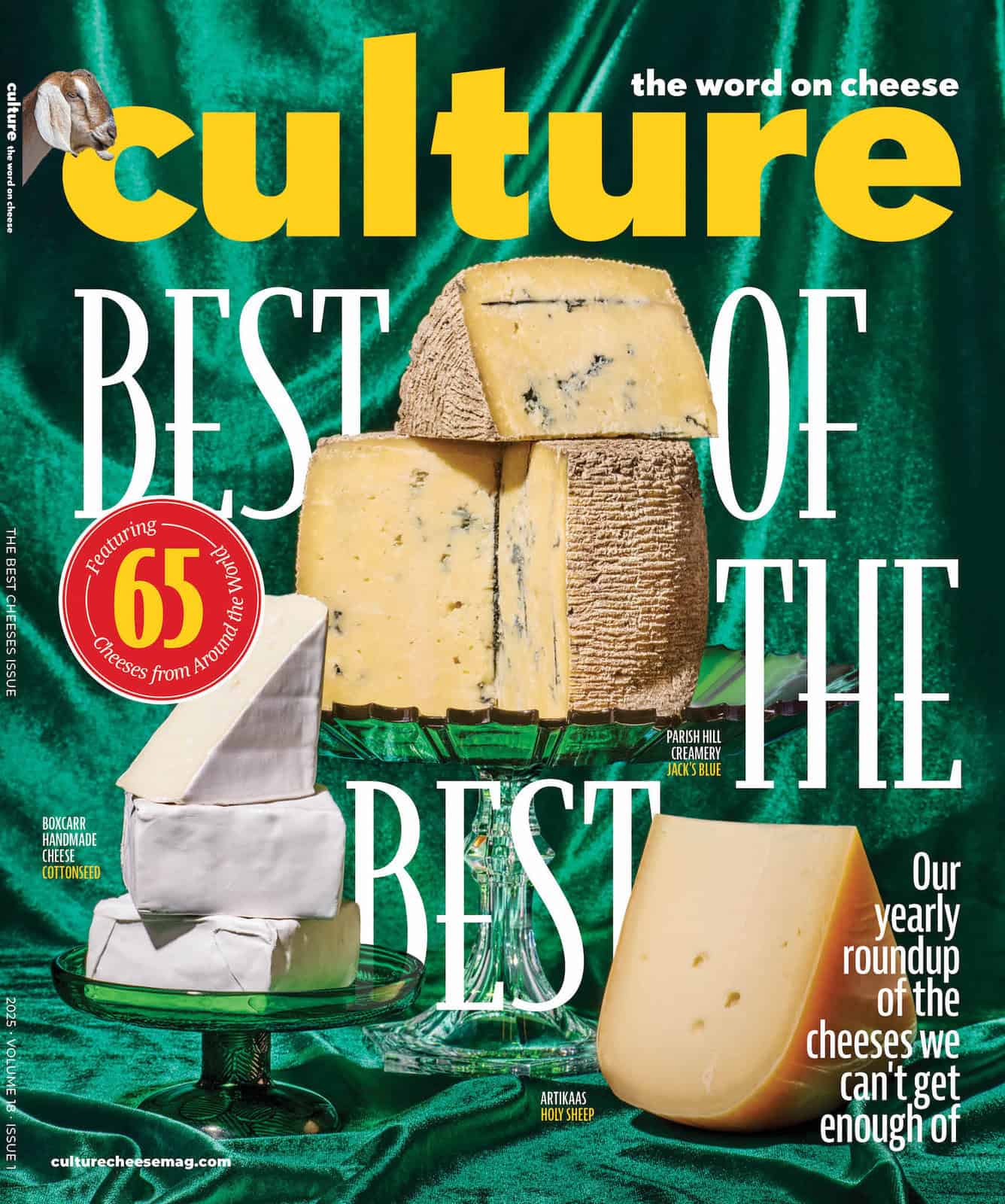Bonne Bouche
- Producer
- Vermont Creamery
- Country
- United States
- Region
- Vermont
- Size
- 3 in. diameter, 1 in. high
- Weight
- 4 oz
- Website
- www.vermontcreamery.com
- Milk
- Goat
- Treatment
- Pasteurised
- Classification
- Soft
- Rennet
- Microbial
- Rind
- Mold Ripened
- Style
- Soft-Ripened (Brie-like)
Founded in 1984 by Allison Hooper and Bob Reese, Vermont Creamery is located near Websterville, Vermont. Having spent time with a small-scale cheesemaker in Brittany during the 1970s, Allison was working as a state dairy lab technician in Vermont when she responded to a request from Bob Reese to produce some fresh chèvre for a state dinner. At the time, Bob was employed as marketing director for the Vermont Department of Agriculture. The chèvre was a hit and after some experimentation, Bob and Allison decided to go into production on a more formal basis, founding Vermont Creamery.
Milk for cheese production comes from twenty-one family farms in Vermont, New Hampshire, New York and Quebec. Each farm has an average herd size of approximately 150 goats. Vermont Creamery makes a variety of fresh and young style cheeses and cultured dairy products, many of which are based on French recipes. They also make an outstanding cultured butter. Cheeses are made from either goat's or cow's milk.
Bonne Bouche (which means literally "good mouthful" in French) is a delicate, ash-covered disc that made its first appearance in 2001. The cheese is made using pasteurized milk, cultured and coagulated in buckets using a slow lactic set. This allows for gentle curd development before they're carefully ladled into disc-shaped molds and allowed to drain overnight, naturally and with no pressing. The following day, the young cheeses are removed from their molds, salted, and covered in a light coating of ash before being transferred to the drying room. They will spend a couple of days there to encourage development of a moldy rind. After drying, the discs are again moved to to the aging room where they are matured for approximately ten days before release.
Tasting Notes
Due to its size, style and shape, Bonne Bouche matures rapidly. It's a very delicate cheese that needs to be consumed within a short window, when it's at its best and ripest. At maturity, the rind is wrinkled and delicate grey in color with patches of white mold. It shouldn't appear overly wet or sticky. The interior paste should be soft and yielding (not liquid) with bright, clean flavors of citrus and hay.



